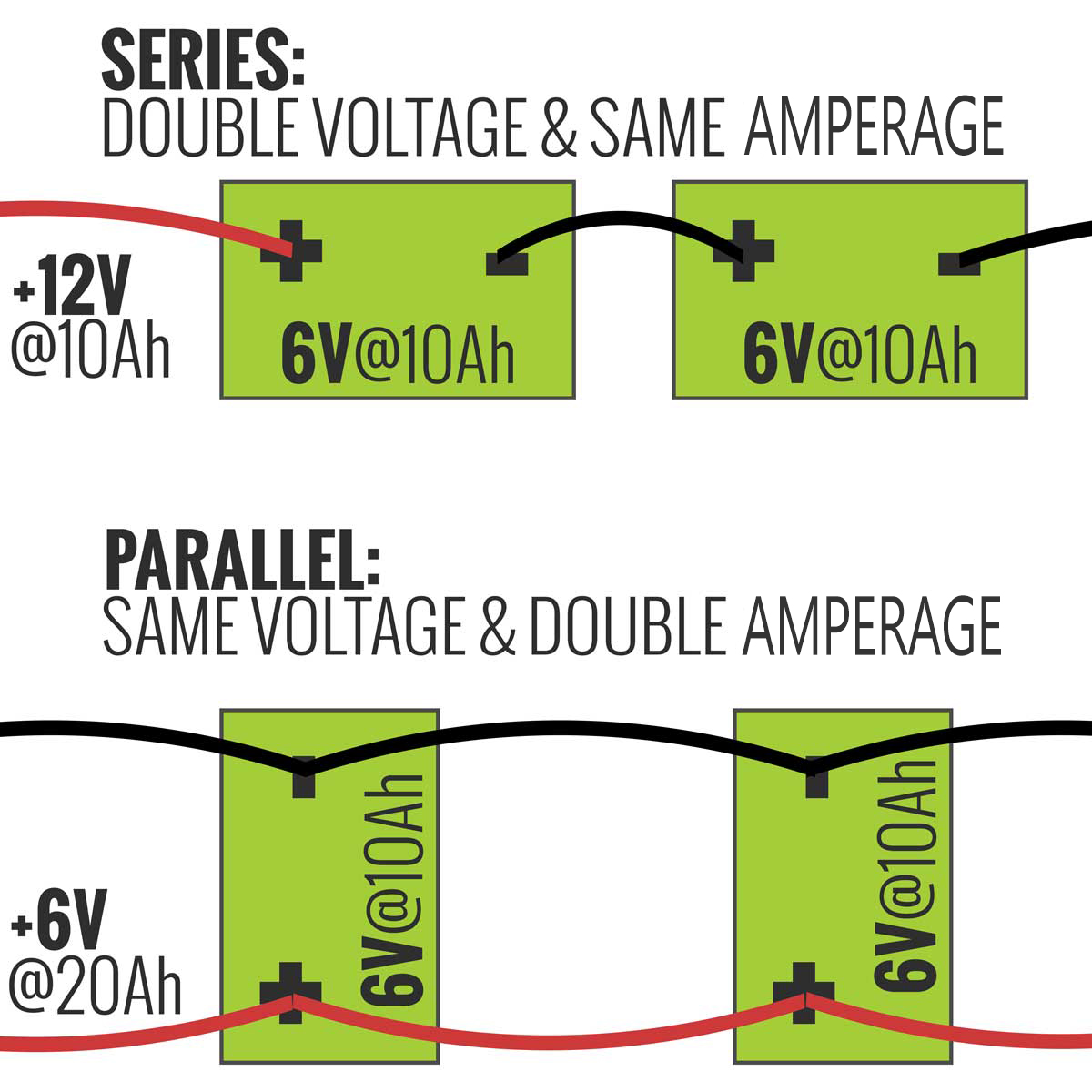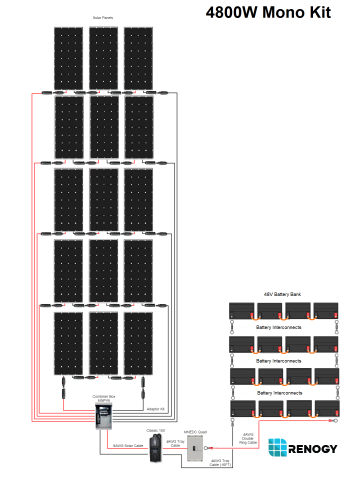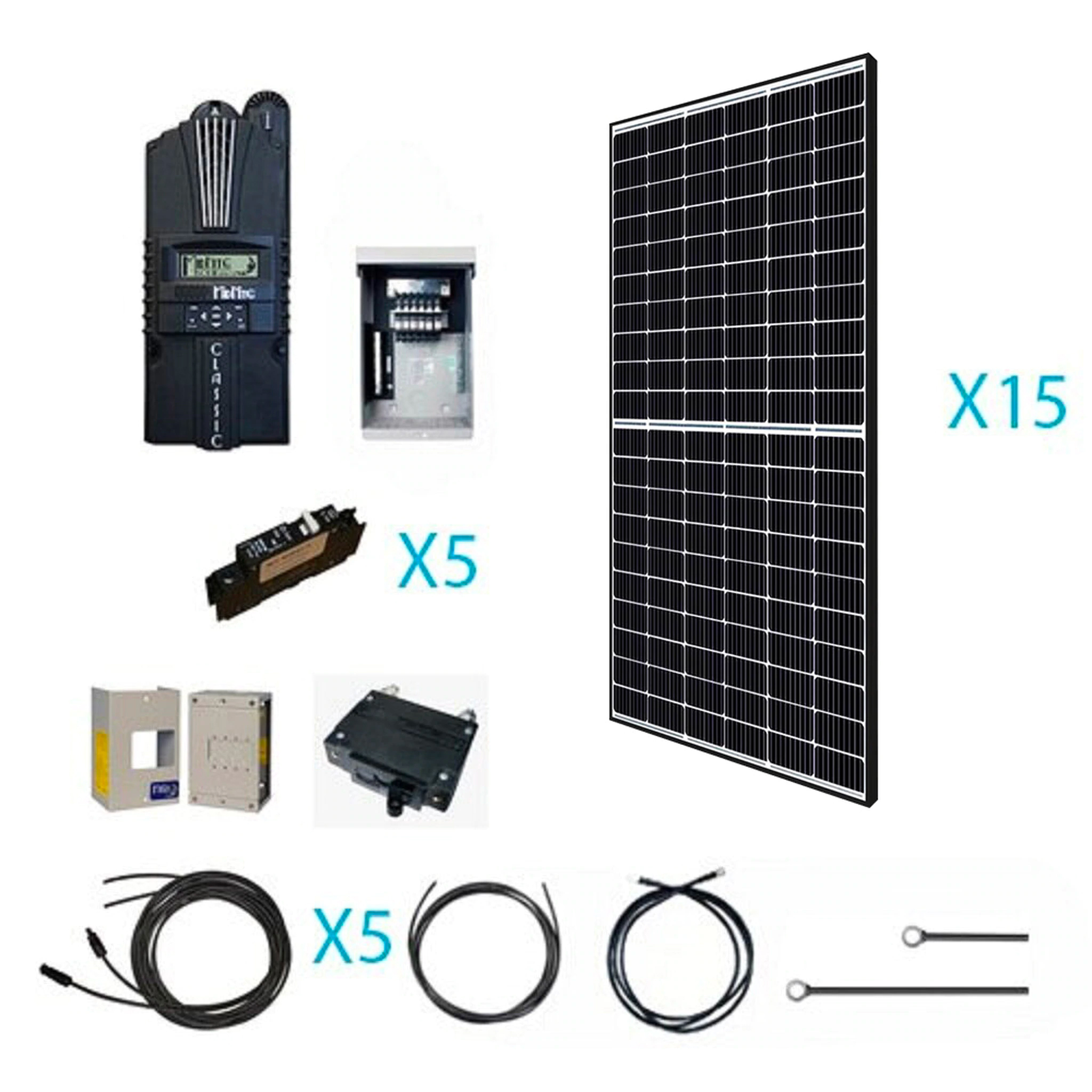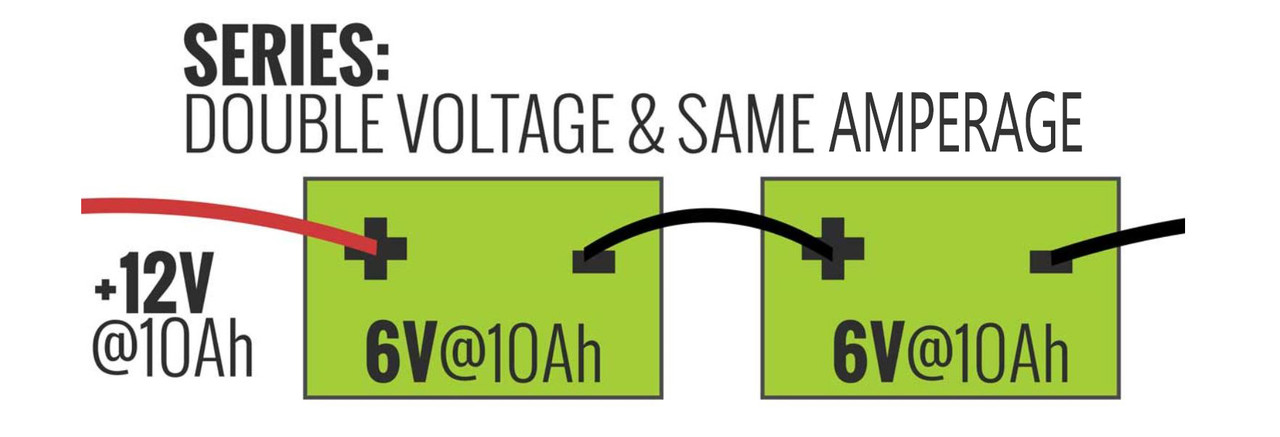48 Volt Systems: The Future of Off-Grid Solar
Solar power is going to be a part of our future, whether we have solar on our homes, RV’s, or off-grid cabins or whether it's coming from the grid. According to a recent Forbes magazine article , the total US PV capacity will likely double in the 5 years, with the biggest chunk coming from public utilities. Solar will be one of the largest growing job sectors in tech -- that is some good news we can get behind!
During a recent interview with the Renogy Technician Team ( Meet the Ren-gineers!), we got a glimpse into the future of solar technology. We were intrigued with the development of 48 Volt systems, so chose to dig deeper into the advantages and disadvantages of this burgeoning technology to help the solar curious make some important decisions for their off-grid dreams.
What is a 48V system?
Many off-grid cabins or RV’s utilize 12V systems to run their 12V appliances. Any increase in capacity, whether in panels or batteries to power more stuff, means a decision: increase the voltage or increase the amperage. Connecting batteries in parallel, (see diagram) keeps the voltage constant and doubles the amperage. This is great, but only to a point; as the amps increase, so does the need for bigger wires to make the system safe. More amps, or flow of current, through a wire means more resistance and therefore more heat going through it. More heat means increased potential for a blown fuse, tripped breaker, or fire. 48 volt systems strike a balance between increasing capacity without increasing the danger.

What are the advantages of a 48V over a 12V system?
Safer: 48V systems are able to run appliances more efficiently with less amps running through the wiring as 48V systems have the benefit of increasing power to components without raising the current (amperage).
Mauricio Luna, Renogy Engineer, provided a great example of this safety issue in the following comparison between 12V and 48V systems.
We know that Watts (W) is a product of Amperage (A) and Voltage (V) (i.e., W = V x A), so if we have a 1500W System in 12V and 48V we will observe the following:
1500W / 12V = 125A: With correct cabling to run 125A, your system is safe. With added amperage and voltage protection, you have to take more precautions in heavier cabling, and these longer cable runs can be more expensive.
Now looking at 1500W / 48V = 30A: Running 30A in a line doesn't require as thick of cabling; and when connecting batteries, simple series connections are needed as opposed to double connections to make 12V parallel connections.
As you can see, a 48V system can run a 1500W system more efficiently with lower amps (safer) without compromising the power. Thus, a 48V system is deemed safer because it can offer the same high power needs at lower amp transmission.
Less Expensive Batteries & Wiring: 48V systems will eliminate the need for expensive batteries as 48V systems have the benefit of increasing power to components without raising the current; thus, minimizing copper, which requires expensive cabling and a loss in transmission through resistance and heat.
Higher Efficiency: Currently, 48V systems with an inverter will be able to handle more full power applications due to having higher voltage in both household and mobile applications with more power demands. In most cases, 48V inverters should have better efficiency than 12V inverters. According to Mauricio, “This will be effective in systems where they have the following: PV Array --> Battery Bank --> Inverter --> AC (Alternating Current) distribution --> Appliances.” This will leave the only real relevance of the DC voltage to battery bank configuration and wiring between the charge controller, battery, and inverter.
Scalable: 48V systems, just like 12V systems, are scalable. The smallest size 48V system would consist of four 12V batteries set up in series. Renogy's 100Ah AGM battery will provide this system a usable capacity of 2400 Watt Hours (Volts x Amp Hours = Watt Hours). Assuming that this system gets depleted each day, and has an average for 4 hours of good sunlight each day, it needs 3 x 200W (or an equivalent total watts) solar panels in order to keep it charged. However, this system could be scaled up to serve a much higher capacity to serve a higher load. Currently, Renogy is developing a 48V LiFePo battery bank to support these larger systems.

What are the Challenges to 48V Systems?
One efficiency strategy for 12V systems is to connect appliances directly to the DC battery, eliminating the need for the inverter. Currently, there aren’t many 48V appliances available, if at all. To run a 48v battery system, a 48V to 12V converter is the solution for the time being. But with so many industries leaning toward the benefits of 48V systems, more products will become available. Even with the addition of a 48V to 12V converter, this will still be more efficient than a 12V system. Many industries, including the automobile industry will be moving toward these systems.
Renogy’s “Villa” 48 Volt Off Grid Kit

The 4800 WATT / 48 VOLT Monocrystalline Solar Kit system (just one example of a 48V system) is designed for consumers seeking to live a more sustainable lifestyle in a fully equipped off-grid home or cabin. Named the “Villa,” this kit is designed for all-day multi-appliance use, such as efficient refrigerators, washer/dryers, ceiling fans, and office equipment while providing the satisfaction of independent power generation. This large-scale system can serve as a primary power source, capable of supporting the power consumption of multiple people as well as keeping your home energized during emergency power outages. This high-end system is designed to be an investment in your future, and should qualify for various state and federal tax incentives, whether your solar home serves as your primary or secondary residence.
Why is 48V the future of solar?
As more devices become hybrid (both on and off-grid) or become electrical, 48V systems will be the standard in the future. They will be able to work with 12V systems in vehicles with innovations in converters without compromising efficiency.
Renogy is currently working on a 48 to 12V converter model, so stay tuned for that release. Also, they are in the process of launching a new solar inverter and developing a 48V battery bank to support their kits as described above. If you are just looking for 48V off grid solar products, suggest you can check the video below to learn about Renogy 48V Power System.
If we’ve inspired you to go solar with Renogy, please use our affiliate link and promo code “canlife.” You will get a 10% discount and we will get credit for the sale. It’s win-win! And, as always, contact us directly with any questions. We love to hear from our readers!
Shari Galiardi & David Hutchison have turned their higher education backgrounds, desire for life-long learning, and thirst for adventure travel into writing, photography, video production, and public speaking tours from coast to coast. Known to their friends as simply Shari & Hutch, you can learn more about their full-time, solar powered adventures on their website at freedominacan.com. Or, follow them on Facebook, Instagram, and YouTube as “Freedom in a Can.”
If you need learn more solar knowledge, you may be interested in our other articles:
Solar Panels 101: A Beginner's Guide
Do solar panels increase home value
how efficient are solar panels
How Many Solar Panels Do I Need








